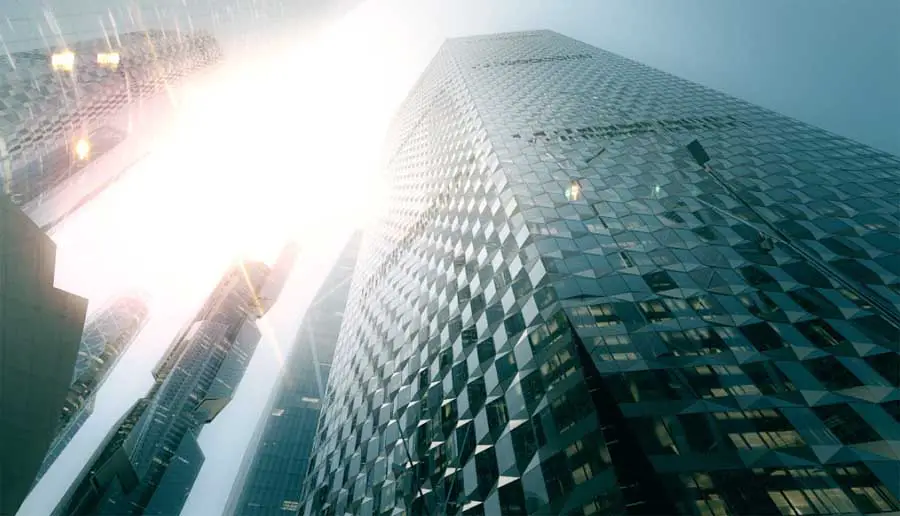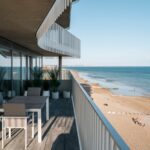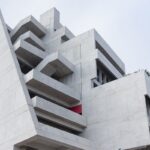Praemium Imperiale Architecture Laureate, Dominique Perrault Architect, Winner News, Henning Larsen
Praemium Imperiale Architecture Laureate 2015 Winner
Dominique Perrault, Paris, France: Japan Art Association Award 2015 – Winner
26 Oct 2015
Praemium Imperiale Architecture Laureate 2015 News
Dominique Perrault wins Praemium Imperiale
Dominique Perrault is an architect who steeps himself in the history, environment, and special local nature of the construction site. His innovative buildings are designed to blend into the environment without spoiling those features.
In 1989, he won the architecture competition for the National Library of France (completed in 1995) at the age of 36. He buried the main body of the building underground and created a large a garden at its center. This innovative idea was severely criticized at first. However, one well-known architect who lost the competition praised Perrault’s design, and the library has gradually earned a positive reputation. The interior was designed by his partner, Gaëlle Lauriot-Prévost, who used “metal mesh” materials throughout.
The Blade Tower Seoul by architect Dominique Perrault:
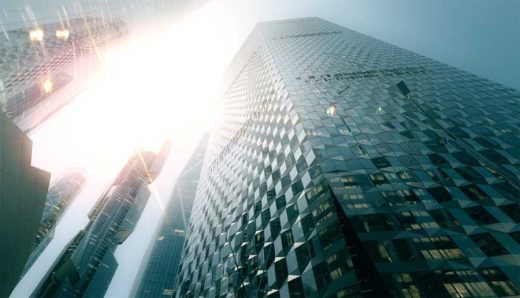
image © DPA / Adagp
He was subsequently engaged in such major projects as the Velodrome and Olympic Swimming Pool in Berlin, the Court of Justice of the European Union in Luxembourg and the Albi Grand Theatre in Albi, France. Ongoing projects include the refurbishment of the Dufour Pavilion at the Palace of Versailles and the new Longchamp race track in Paris. In Japan, he designed the Noh Theatre in Tokamachi, Niigata Prefecture, Fukoku Tower in the Umeda business district of Osaka.
Praemium Imperiale Architecture Laureate – past winners
Dominique Perrault Biography
1953 Born in Clermont-Ferrand, France
1978 Diploma in architecture (Ecole Nationale Supérieure des Beaux-Arts de Paris)
1979 Higher diploma in town planning (Ecole supérieure des Ponts et Chaussées, Paris) and Postgraduate degree in History (Ecole des Hautes Etudes en Sciences Sociales, Paris)
Starts working as urban planner at the Atelier Parisien d’Urbanisme(APUR) of the city of Paris
1981 Opening of Dominique Perrault Architecture in Paris
1984 First notable project : ESIEE (academy for engineers of electronics and electrical engineering) for the Chamber of Commerce and Industry in Paris – Marne-la-Vallée
1989 Winner of the international competition for the National Library of France in Paris (1995 Completion)
1992 Winner of the international competition for the Velodrome and Olympic Swimming Pool in Berlin (1999 Completion)
1993 Great National Prize of Architecture, France
1997 Mies van der Rohe Pavilion Award for European Architecture
2008 Completion of the EWHA Women’s University Campus Center, Seoul, Korea
Inauguration of the exhibition DPA Dominique Perrault Architecture at the Centre Georges Pompidou, Paris
Completion of Court of Justice of the European Union, Luxembourg
2010 Curator of the French Pavilion for the 12th Venice Architecture Biennale Completion of Fukoku Tower, Osaka
The exhibition DPA Dominique Perrault Architecture is presented at the Tokyo Opera City Art Gallery
2011 Completion of the Arganzuela Footbridge in Madrid, Spain
Winner of the international competition for the Pavillon Dufour in Château de Versailles (completion 2016)
2013 Officier de la Légion d’Honneur
2014 Completion of the Albi Grand Theater, France
Completion of the 1st tower, DC Towers, Vienna, Austria
source: http://www.praemiumimperiale.org/en/component/k2/item/325-perrault
Website: www.praemiumimperiale.org/en/component/k2/item/325-perrault
Website: www.perraultarchitecte.com/en/homepage/
Bibliothèque Nationale François Mitterand, Paris, by Dominique Perrault:
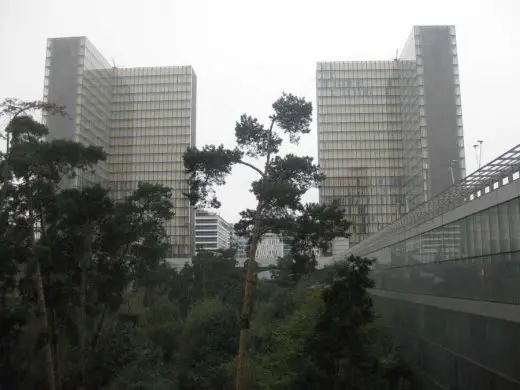
photograph © Adrian Welch
Well known for his unique ideas, he sometimes embeds his buildings deep in the ground and often uses the material of “metal mesh” as a key architectural feature in his works.
“My starting point is the empty space and how to design it,” Perrault explains. “We need empty spaces in our homes to make them livable. In the cityscape, this emptiness is sometimes viewed as positive, but sometimes as rather unsettling. My primary focus is on finding ways to enhance the quality of these empty spaces.”
Dominique Perrault’s answer to the philosophical dilemma of how to treat empty space is to build buildings in harmony with the special physical features of the locale and the historical background of the building site. He disagrees with the approach of some architects who seek to build eye-catching, unconventional buildings for their own sake.
“Architecture should not be closed on itself, with its back to the context. It should always be in resonance with the environment, whether natural or urban. We architects should always think about our buildings’ place in the urban design, and about the city itself as a whole.”
Dominique Perrault wanted to become a painter, but at the age of 25, he changed his orientation and decided to become an architect. In 1989, he won the competition of the National Library of France (completed in 1995) at the age of 36, by the decision of President Franҁois Mitterrand. He considers that the experience of painting has been useful in his work as an architect, but it has also been useful in a curious way in that he says, “it is something that has enabled me to lose the fear of looking at a blank page”.
The National Library of France, which brought him international renown as an architect, was full of innovative ideas. He built 100-meter towers at the four corners, buried the main body of the building underground and created: “At the heart of the library, a large garden; around it, a cloister, with towers, like an abbey.” This innovative design received severe criticism at first. However, one well-known architect who lost the competition praised Perrault’s design, and the library has gradually gained a positive reputation. The interior spaces are largely created by or clad in “metal mesh” materials designed by his partner, Gaëlle Lauriot-Prévost.
Since then, the two have worked together closely, engaged in such major projects as the Velodrome and Olympic Swimming Pool in Berlin, the Court of Justice of the European Union in Luxembourg and the Albi Grand Theatre, in Albi, France.
In the Albi Grand Theatre, they used the “metal mesh” previously used mainly for interior decoration, on the exterior, to drape and cover the entire building. The theatre manifests an evolving appearance as the day progresses. In the morning, the metal mesh shines like a golden scarf and in the evening the theatre glows in a soft, brick-red color, reflecting the light emanating from the interior through the metal mesh causing the building to blend with the beautiful street of the old town filled with houses made of local brick.
At the same time, the mesh protects the building from the effects of the blazing sun of the south France sun and from rainstorms. Ongoing projects include the repurposing of the Dufour Pavilion in the Palace of Versailles and the new Longchamp race track in Paris.
Among his works in Asia, Dominique Perrault designed the Noh Theatre in Tokamachi, Niigata Prefecture, the Fukoku Tower in the Umeda business district of Osaka and the Ewha Women’s University Campus Center in Seoul, South Korea.
Location: Tokyo, Japan
Praemium Imperiale Architecture Laureate 2013
David Chipperfield wins Praemium Imperiale
Architectural Laureate of the Praemium Imperiale 2013

photo © Nick Knight
David Chipperfield is announced as the Architectural Laureate for the 2013 edition of the Japan Art Association’s Praemium Imperiale. The award will be presented by HIH Prince Hitachi, brother of Emperor Akihito, at a ceremony in Tokyo on 16 October 2013.
David Chipperfield Architect
Praemium Imperiale Architecture Laureate 2012
Henning Larsen wins Praemium Imperiale

photo : Agnete Schlichtkrull
The Praemium Imperiale is a global arts prize awarded annually by the Japan Art Association. Now in its 24th year, since its inauguration in 1989 it has become a mark of the highest international distinction for achievement in the arts. The awards honour individuals from all over the world who have made an outstanding contribution to the development of the arts and are made in five categories – Painting, Sculpture, Architecture, Music and Theatre/film.
Henning Larsen
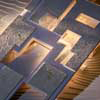
image from architects
Praemium Imperiale Architecture Laureate Past Winners
Ricardo Legorreta wins Praemium Imperiale in 2011

photograph of Ricardo Legorreta from B&Q
Praemium Imperiale 2011
2011 winner : architect Ricardo Legorreta
Toyo Ito wins Praemium Imperiale Architecture Laureate for 2010
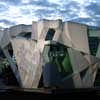
photograph © 2007 Deborah Bullen
Praemium Imperiale 2010
2010 winner : architect Toyo Ito
Zaha Hadid wins Praemium Imperiale Architecture Laureate for 2009

picture from architects
Praemium Imperiale 2009
2009 winner : architect Zaha Hadid
Japan Art Association
Praemium Imperiale Background Information
The Praemium Imperiale was established in 1988 to mark the centennial of the Japan Art Association and to honour the wish of the late Prince Takamatsu, its Honorary Patron for 58 years, “to contribute to enhancing and promoting the cultures and arts of the world”. As well as honouring five international artists each year, it also gives a grant to a Young Artists group, who nurture young talent.
Japan Art Association
The Japan Art Association is the oldest cultural foundation in Japan, established in 1887. It runs the Ueno Royal Museum in Tokyo, and organizes and holds art exhibitions. Prince Hitachi, younger brother of the Emperor, has been its Honorary Patron since 1987. The Association has presented five Praemium Imperiale Awards every year since 1989.
Architecture Awards
World Architecture Festival Awards
Comments / photos for the Praemium Imperiale Architecture Laureate 2015 page welcome
Website: www.praemiumimperiale.org

